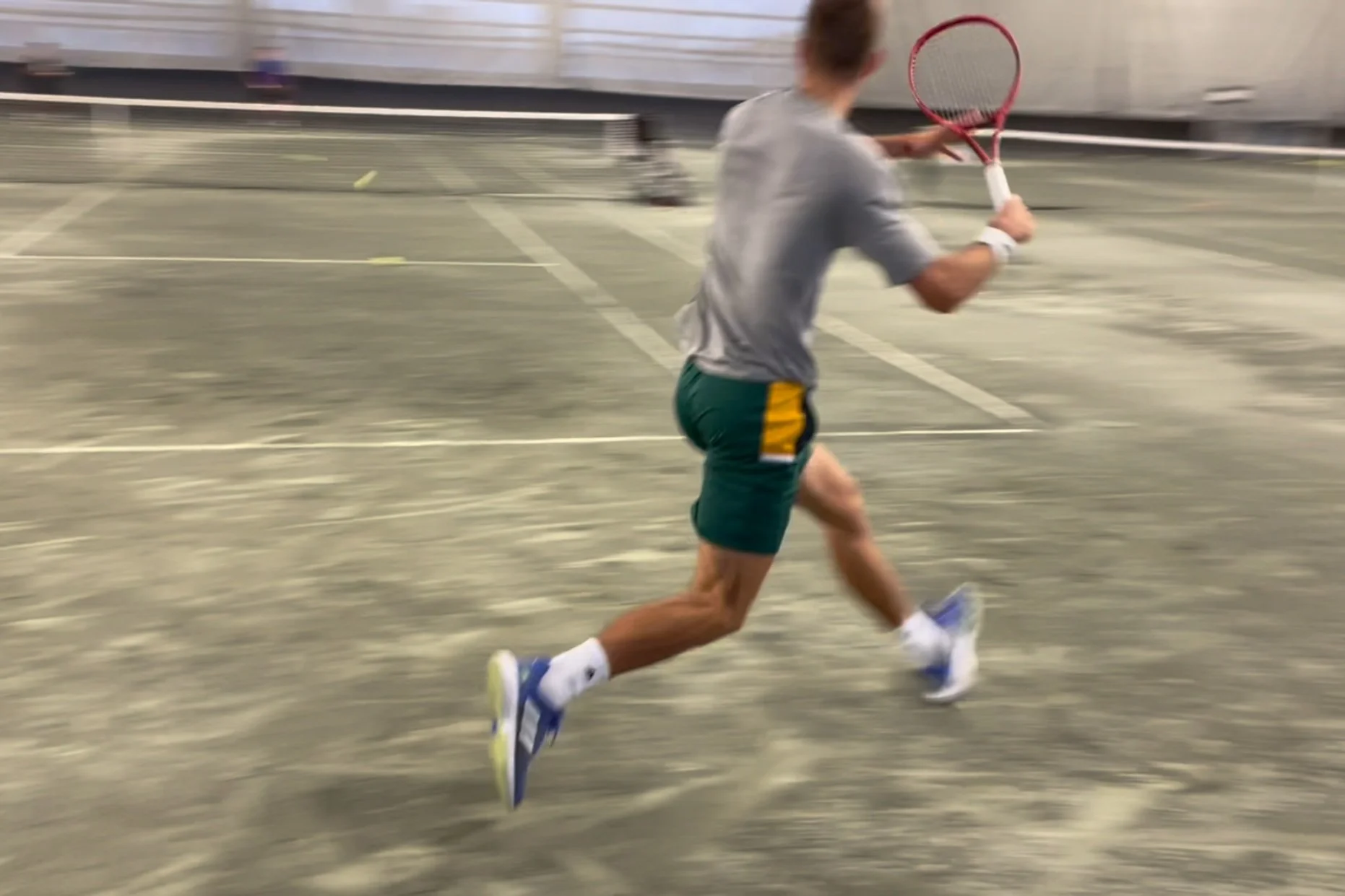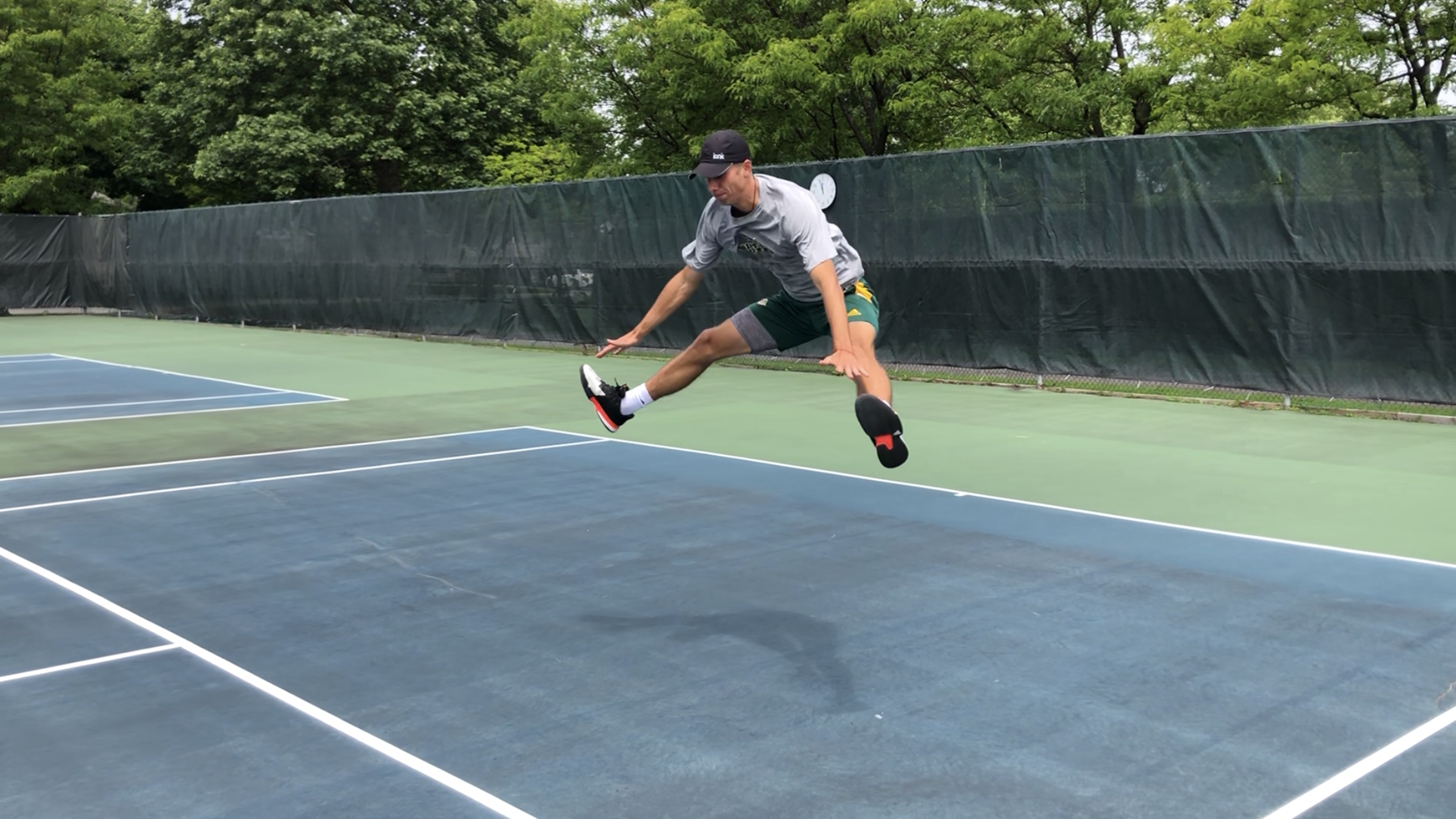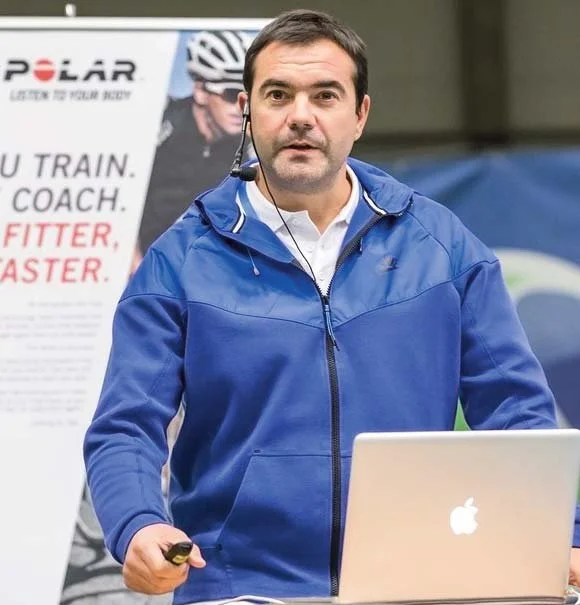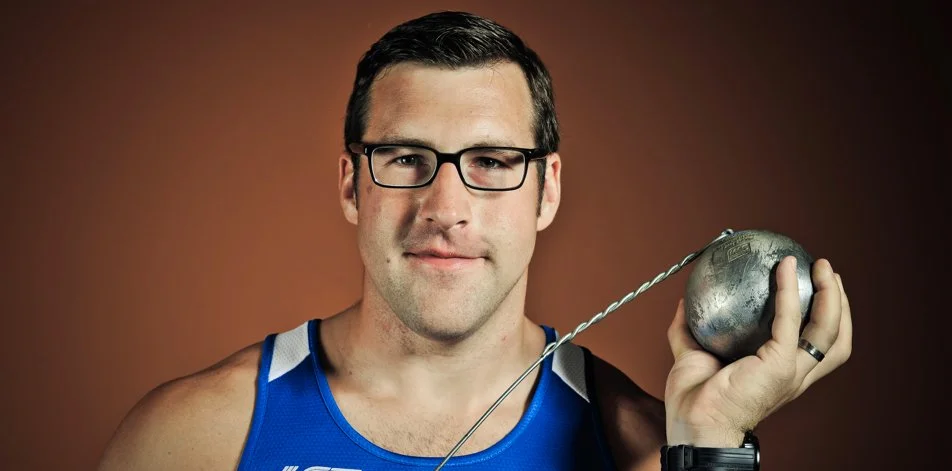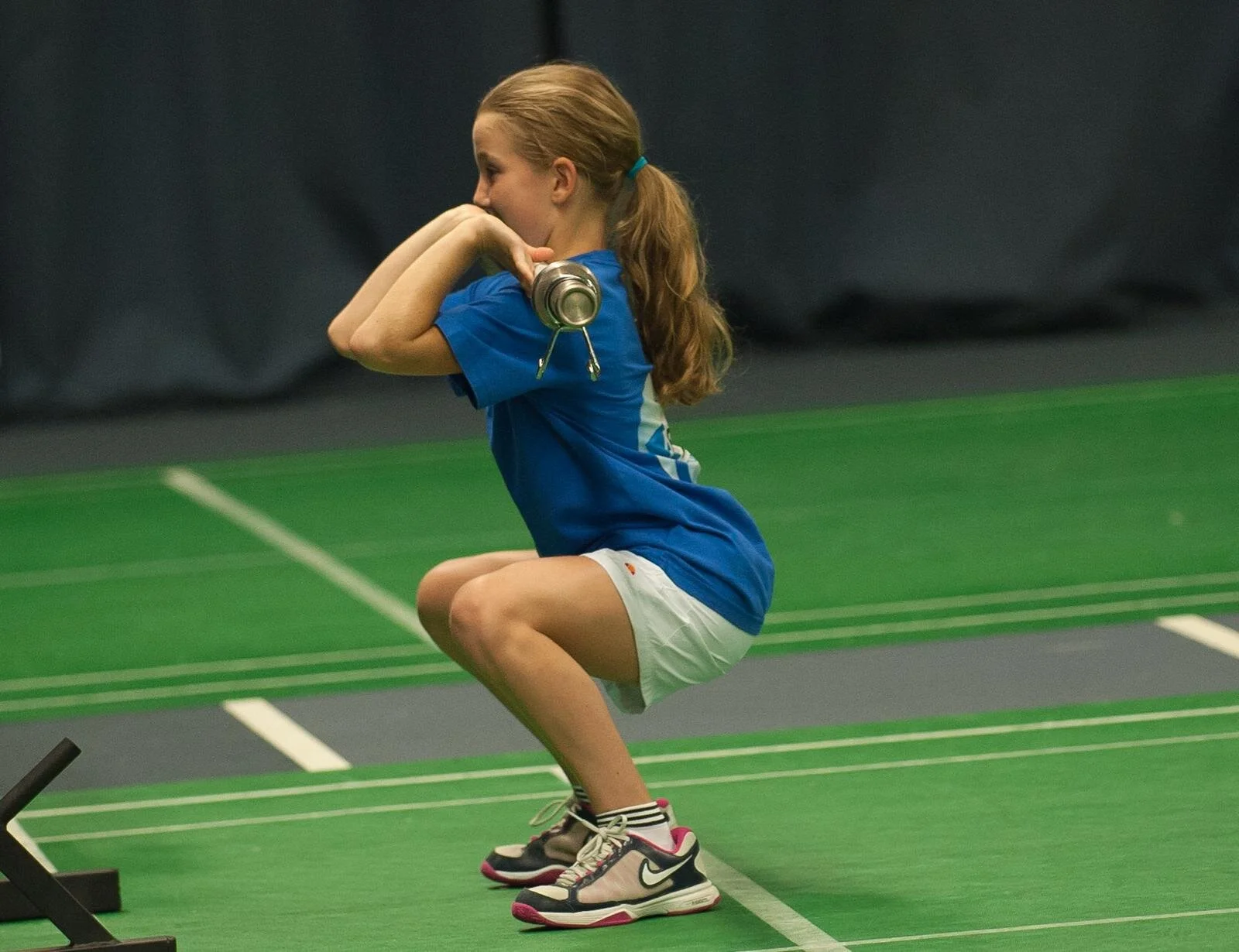There are countless ways that tennis players can get into shape. From running workouts to weight training, on-court drills and more.
All have their pros and cons. And all can be utilized at different times of the year + at different stages of a player’s development.
Recently, plyometric and jump training has resurfaced as a popular training modality amongst tennis players. You’ll see many performing hurdles, line hops and other types of jumping variations.
In this episode, I welcome PhD in Sport Science - Jaime Fernandez - one of the top tennis researchers out there.
Jaime and I tackle a number of sport science topics including best (and easiest) practices for monitoring on-court training loads, where to fit the serve into the practice schedule and what really matters when it comes to keeping the tennis shoulder healthy.
Martin also coaches athletes from other sports and shares his insights on using the Bondarchuk system to classify + organize training, where various tennis activities would fit into this categorization and the how + why behind mircodosing certain workouts.
In this episode, creator of Hmmr Media - Martin Bingisser - joins me to talk about choosing exercises that are the most 'bang for your buck' in terms of training transfer.
As a former hammer throwing athlete (and now coach), Martin has an extensive background in trunk development and describes his approach - using bodyweight, weights and med balls - to target this quality.
Martin also coaches athletes from other sports and shares his insights on using the Bondarchuk system to classify + organize training, where various tennis activities would fit into this categorization and the how + why behind mircodosing certain workouts.
IWhat is coordination? What are the fundamental movements young players need to lay the foundation for future athletic + sporting success?
In this episode, my good friend and colleague Howard Green joins the show to tackle all these topics and more. Howard is the creator of 'Supermovers' - a program dedicated to the development of movement skills in under 12 athletes.
I recently saw a post on a Facebook coaching forum. It was actually a question that went something like this, “coaches, have you seen any of your players improve their tennis because of their physical training?”.
My hand immediately covered my face and I began shaking my head in disbelief (no, no, no...it can’t be).
My answer to the question is an emphatic YES! Of course I’ve seen - on numerous occasions - physical preparation directly benefiting a player’s tennis game.
This past weekend, I had several players message me looking for a training program they could do for the next few weeks (or perhaps longer) - one that wouldn’t require any gym equipment. And in light of recent events, I’m guessing they aren’t the only tennis players (and athletes in general), in this scenario.
Because of this, I’ve taken some time to create what I’ve called, The ‘No Gym’ Program. So if you’re in the same situation as many (and don’t have access to gym equipment), just scroll to the end of this page and enter your email address - you’ll receive the program for free.
I don’t train as many junior players now as I have in the past. It’s not that I don’t want to, it’s just that I’m in a position right now where older players - those that are playing professionally (either on a full-time or part-time basis) - take up a big chunk of my time.
That said, I still manage to coach a number of younger players (both in-person and remote). The ages range but generally fall between 9 and 15… and all of them are exposed to strength training in one form or another.
The reason I’m bringing this up is because I often get asked by parents… “is lifting weights dangerous?” or “will lifting weights stunt my child’s growth?”...
Like many coaches, I work with a variety of players. This includes older teens looking to make the transition to pro, juniors that are still honing their skills, seniors that want an edge and pros climbing their way into the top 100. On top of that, it’s a mix of females and males.
This get me thinking (and contemplating) - is my on-court and off-court feedback impactful? Is it driving change? Or impeding it?
Are you a high-performance player or coach? If so, this post is for you.
You see, I’ve coached in a number of high-performance settings. From academies, to federations and in private settings. One common characteristic that has struck me time and again is training schedules. The typical schedule sees players training Monday to Friday. On rare occasions, some take part in Saturday morning sessions - but this is certainly not the norm. As you can see, these settings follow the regular school and work week schedule.
But is it the most ideal option when developing an elite performer?
’ve received many questions of late and thought it might be interesting to share some of them in a post, along with my thoughts on some key topics. These queries come from players, coaches and even tennis parents.
As you read along, keep in mind that a lot of scenarios are circumstantial, so there could be more than one answer to a particular query. That being said, I will give the most direct, evidence backed response, that I possibly can.
For those of you who weren’t aware, my wife and I spent the last 2 years in Munich, Germany. It was a refreshing experience - especially considering that Munich is regarded as one of the nicest cities in Europe. But besides that, I’m eager to share some details about the tennis system in Germany, especially considering I was able to experience it firsthand
My aim is to give you an inside look at what competitive tennis in Germany is all about (based on my perspective) - from the club structure, to the elaborate ranking system and more. Overall, my experiences were quite positive - and I feel that the tennis world in North America can learn a few things from the German system.
Imagine this scenario. An amateur player takes a lesson from a coach with the hopes of hitting a forehand like Roger Federer.
Let’s say the coach plays along. He/she presents a sequence of images to the amateur in order to see exactly the various phases of Roger’s forehand. Next, the amateur performs shadow swings, going through each position as carefully as possible. The coach then feeds the amateur a few balls, providing feedback ONLY on how close the stroke looks to Roger’s.
As coaches, what do we do when young juniors misbehave? Or what about when they don't complete an intended drill? I’ve been around the game for a long time now. From academy settings, junior circuits, the pro tour and everything in between. And what kills me more than anything is players getting punished, either for poor behaviour or not achieving a specific task. Coaches yell, make players run, do push-ups, or suffer some other form of physical punishment. Is this really the best approach?
When teaching various tactical scenarios to players, I often ask them the following question: “what do you think is the most common rally length in tennis”? Less experienced players jump to answers like 7 or 9 while those that have been playing for many years reply with 3, 4 or 5. Do YOU know what it is? When it comes to professional tennis, according to Brain Game Tennis, it’s 1. Can you believe that? The most common rally length (called the mode, in statistics) is 1! That’s a service ace or a service winner (i.e. the returner makes an error off the serve). This happens about 30% of the time. The next most common rally length is 3 - that’s a serve, return and one more shot.
Tennis itself is primarily an individual sport. Even if you play mostly doubles, individual differences between players exist at all levels of the game. This concept is known in sport science as the principle of individualization. Research studies and coaching experience tell us that all athletes respond differently to training. That’s why many fields of study exist - from psychology, to motor learning and strength & power training - each attempting to answer questions that help us better understand human behaviour and the stress-adaptation process (and why there is so much variation in responses to the same training stimuli!).
While there was a lot of positive feedback from last week’s post on blocked vs. random practice, there was also a bit of confusion. I suppose the term ‘random’ can be a bit misleading. To clear the air, this week’s post will attempt to clarify the supposed dichotomy between blocked and random practice and offer a slightly different perspective to the argument. Furthermore, there are 2 other forms of practice - called ‘variable practice’ and ‘constant practice’, which can be influenced by both block and random approaches. Lastly, several examples of each practice type will be offered and described, along with the 'why' behind their use.

